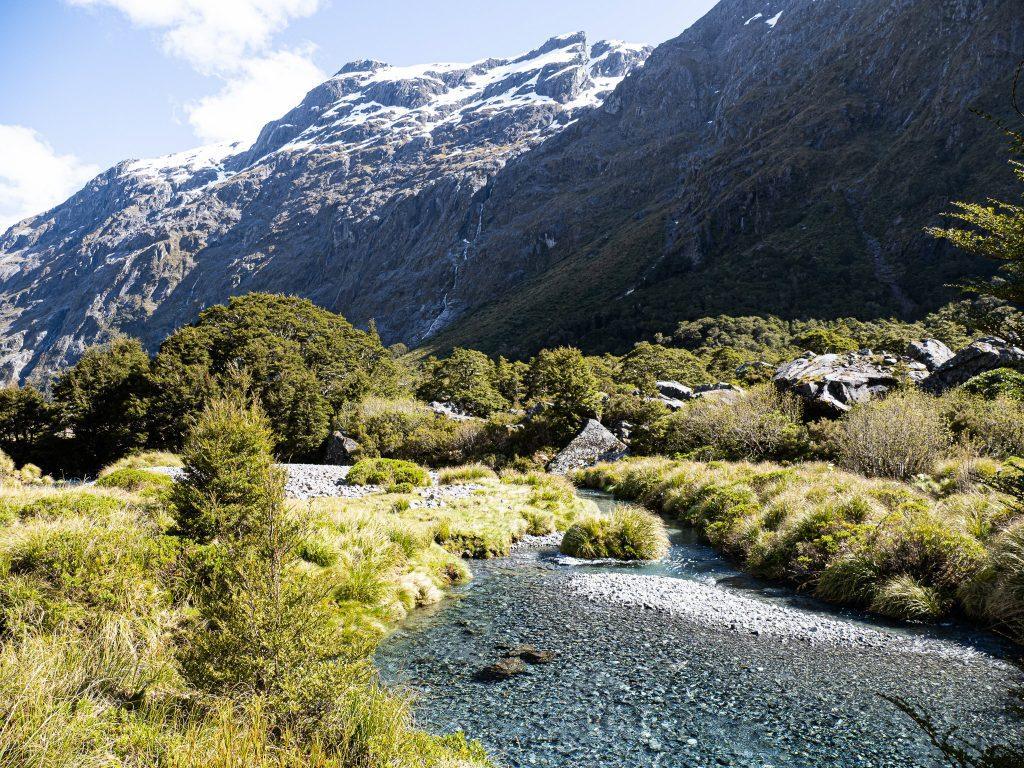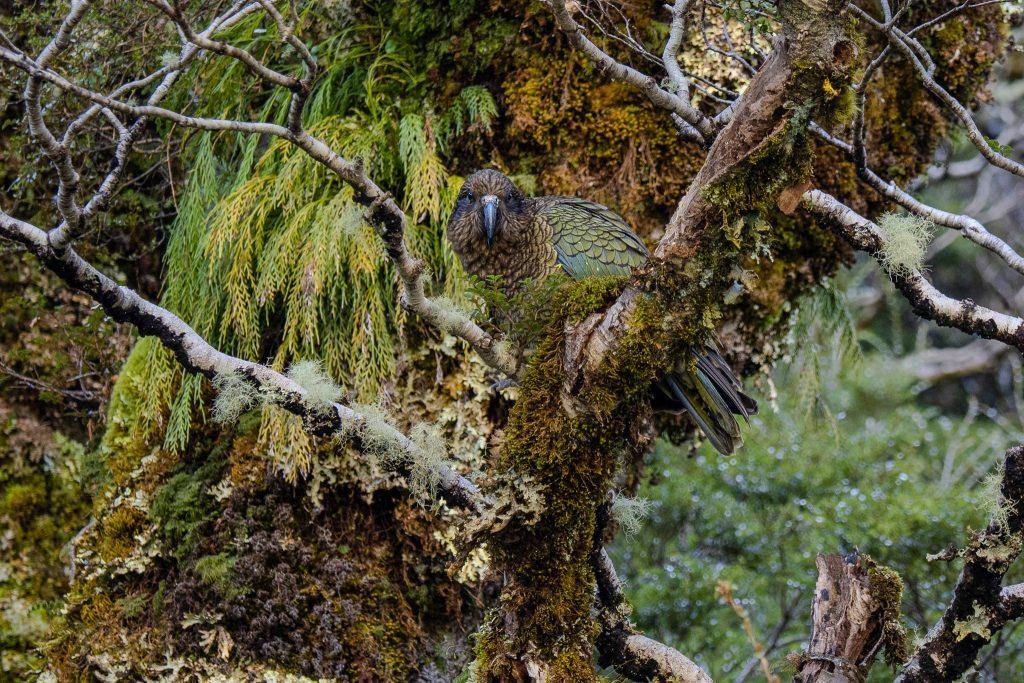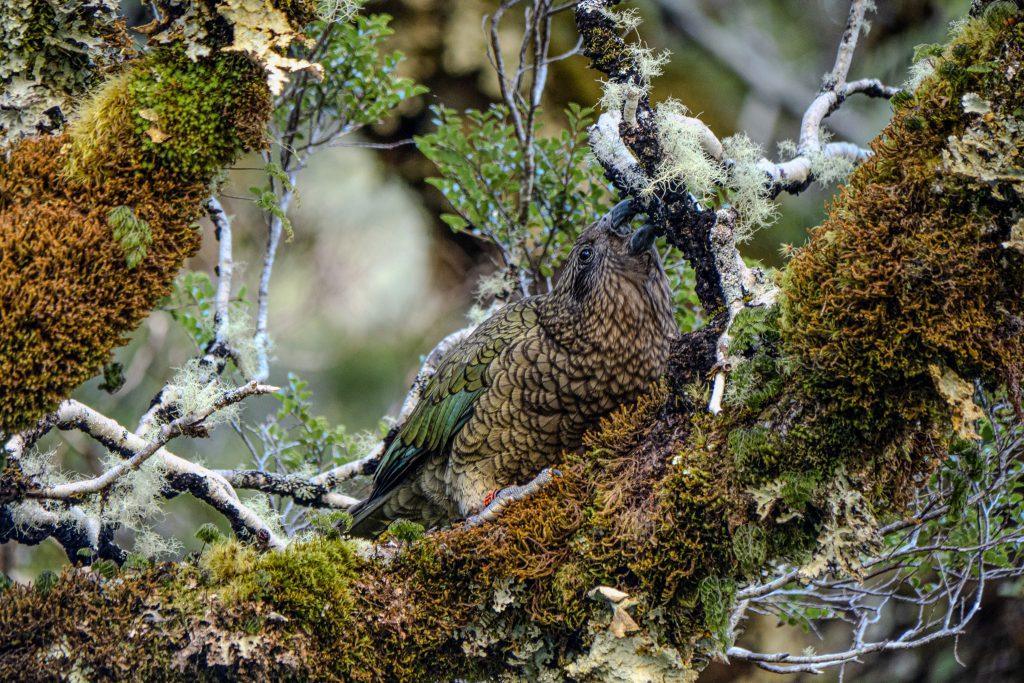In New Zealand’s Southern Alps, a bold parrot defies cold and wind. The kea (Nestor notabilis), endemic to the South Island, intrigues scientists and captivates travelers. Yet behind its discreet plumage and mischievous nature lies a vulnerable species, a fragile symbol of a unique alpine ecosystem.
Article by Damien Lafon & Photographs by Svetlana Markoff

Kea Parrot: A Resident of the Frozen Peaks
Today, steep ridges rise into a shifting sky, sometimes carved by icy gusts. Above 1,600 meters, a flash of olive-green stands out against a dark rock. A kea lands, its curved beak carefully inspecting its surroundings. The world’s only parrot capable of living in high mountains, it has adapted to an extreme climate. Here, winter can last eight months, and resources are unpredictable. To survive, it relies on sharp intelligence and relentless curiosity. The kea’s presence has become an integral part of the New Zealand alpine landscape. Every encounter with this bird highlights the fragile richness of isolated ecosystems.
Intelligence and Curiosity as Tools for Survival
The kea parrot is ranked among the most intelligent birds on Earth. It manipulates, tests, and repurposes objects to explore or secure food. In tourist areas, it opens backpacks, unscrews fixtures, and pulls at car seals. These behaviors, often amusing to visitors, can also cause real damage. Yet this boldness is far from a whim. It reflects an adaptive strategy in the face of a hostile environment. The more a kea discovers, the greater its chances of enduring the harshest seasons.
Did you know?
Kea parrots cooperate with one another to solve complex problems, a rare behavior among wild birds.

Social Life and Collective Learning
Far from being solitary, the kea parrot lives in close-knit groups. These social structures encourage communication and cooperation. Calls vary with context: alarm, play invitation, or movement coordination. Youngsters learn by imitating older birds, observing every move attentively. Play sessions are not trivial. They strengthen bonds and develop both physical and mental agility. In an environment where every resource matters, cohesion becomes a decisive advantage. This complex social system fascinates biologists, who see in it a key factor of resilience.
Kea Parrot and Diet: An Opportunistic Feeder
The kea is a true omnivore. Its diet includes roots, berries, leaves, insects, larvae, and animal carcasses. In winter, it sometimes approaches inhabited areas in search of extra food. Historically, some kea even attacked sheep to feed on the fat from their backs. Although rare today, this behavior tainted its reputation for decades. Yet such dietary flexibility reflects a crucial capacity for adaptation. In New Zealand’s Southern Alps, the ability to diversify food sources is a matter of survival.
A History of Persecution
For over a century, the kea parrot was considered a pest. A bounty was paid for each bird killed. Records estimate more than 150,000 were slaughtered before 1970. Only then did New Zealand law grant the species full protection.
But the measure came late, leaving an already weakened population. Today, the kea remains listed as Vulnerable by the IUCN. It still faces numerous threats: introduced predators, road collisions, and lead poisoning.
Did you know?
The kea’s vivid red underwing plumage is visible only in flight, a hidden flash in the alpine sky.
Conservation and Observing the Kea Parrot
Conservation programs are now active across several national parks. They combine nest monitoring, predator control, and visitor education. Travelers can observe the kea at Arthur’s Pass, Mount Cook, or Fiordland.
These encounters offer rare opportunities to witness its playful behavior. Still, interacting with kea requires care.
Not feeding them and securing belongings protects both bird and traveler. Protecting the kea also means safeguarding a symbol of New Zealand’s biodiversity. In the mountain winds, its silhouette reminds us that curiosity can be a key to survival.
Follow us on Instagram and Facebook to stay informed and support our media via www.helloasso.com
This article may interest you: The Kingfisher: A Blue Flash Along Europe’s Rivers
